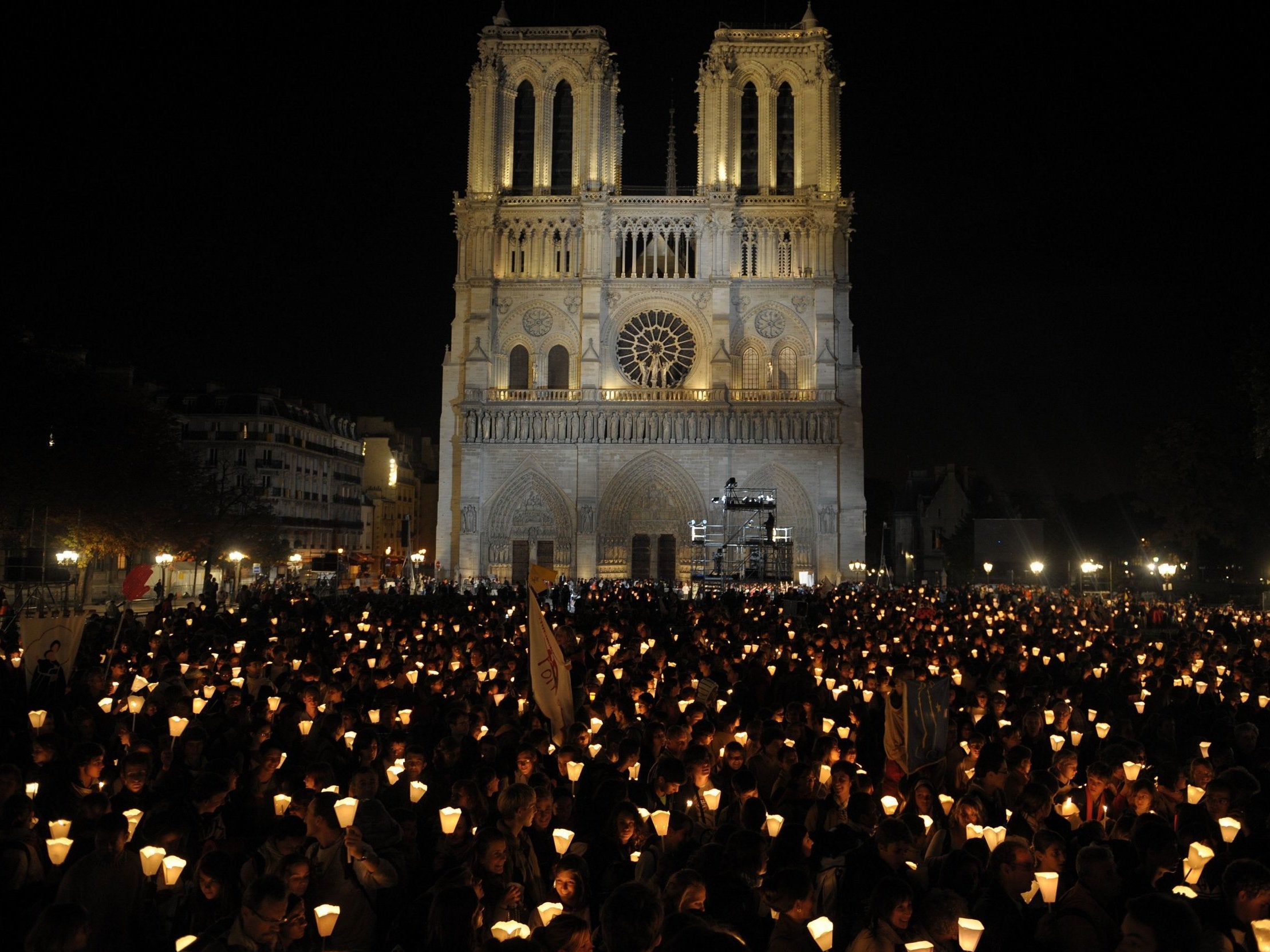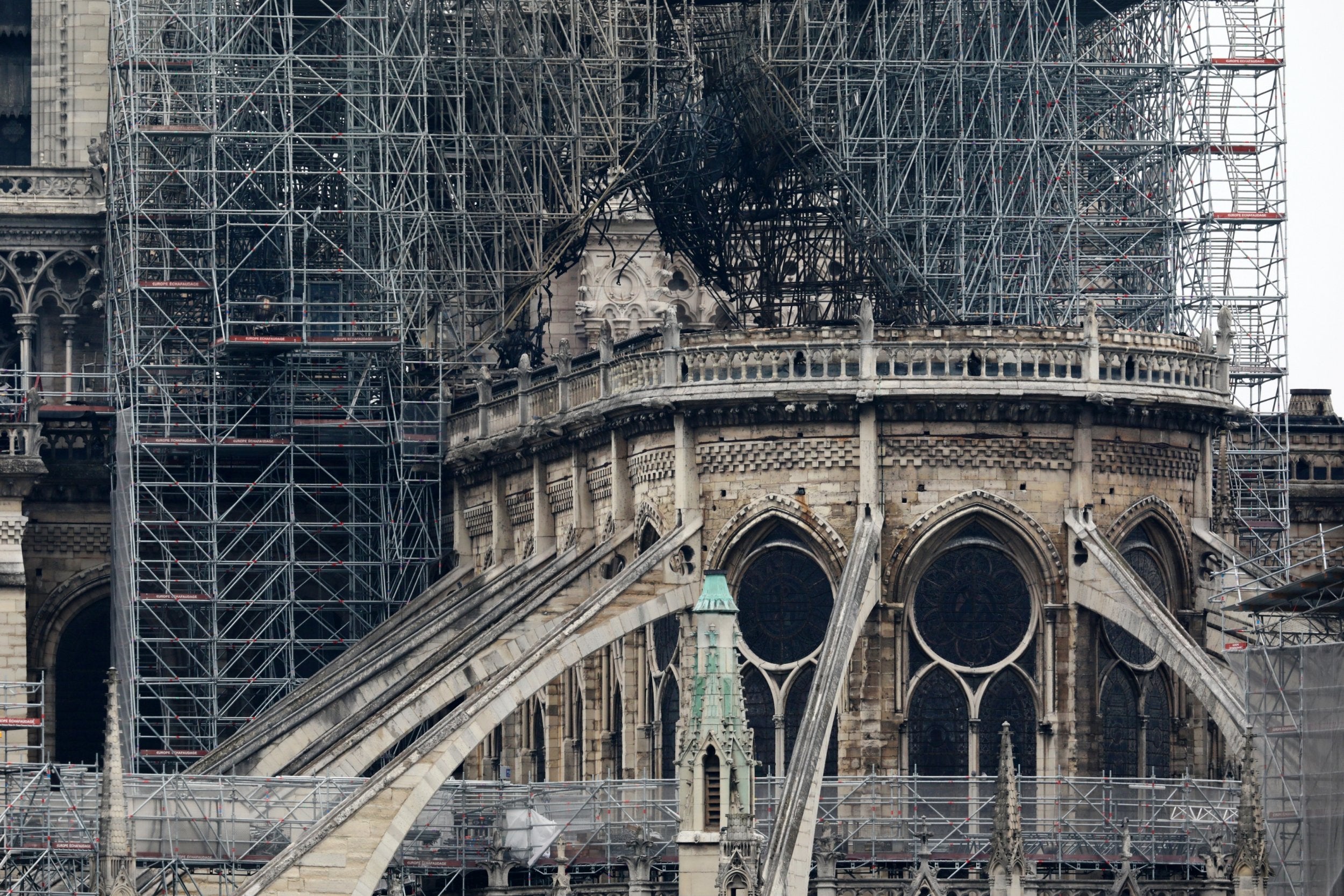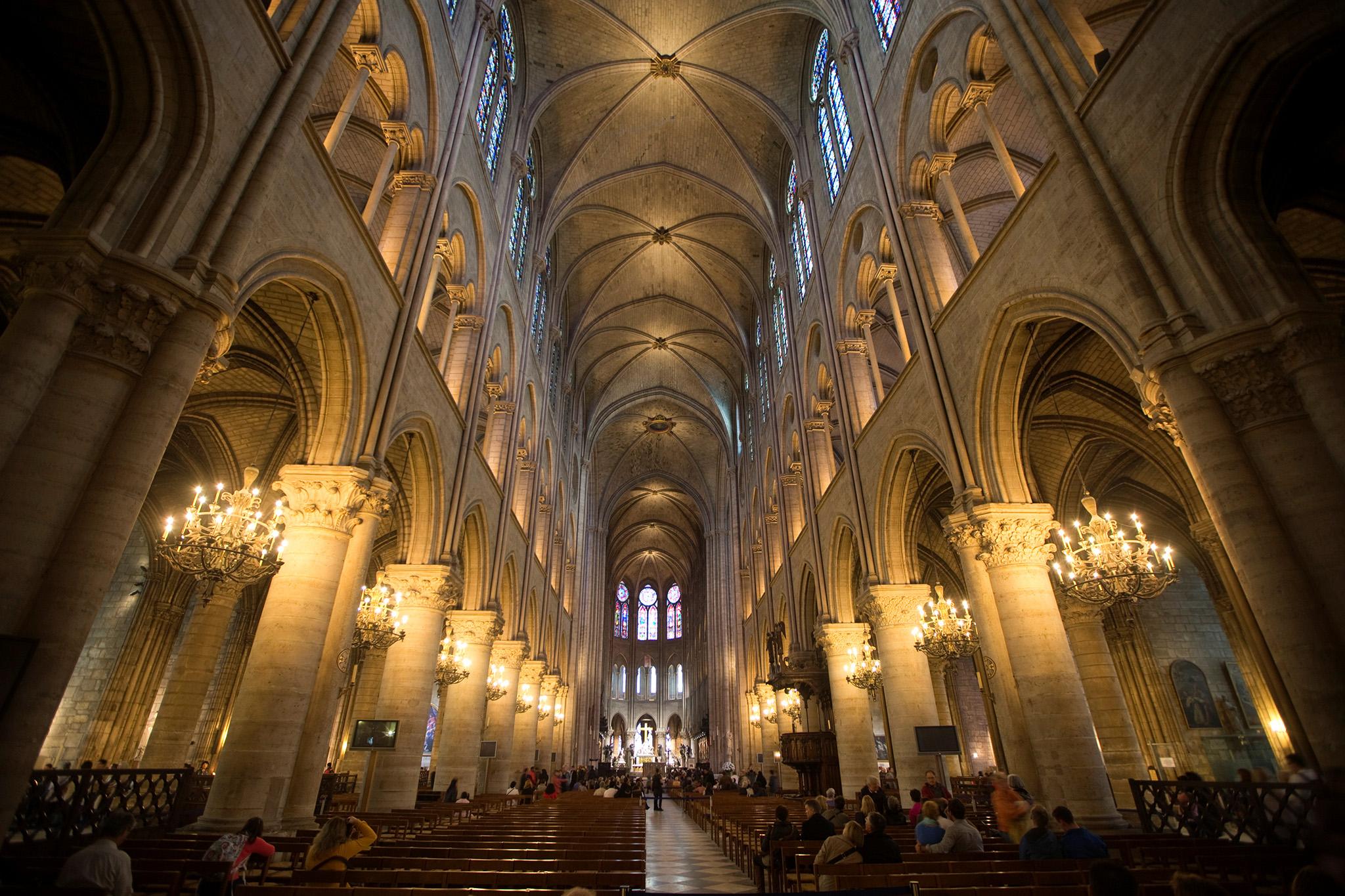Notre Dame cathedral fire: Blaze is proof that truly great architecture holds hallucinatory power
Our shock is to do with the gaping loss of something we assumed was permanent, writes architecture critic

Your support helps us to tell the story
From reproductive rights to climate change to Big Tech, The Independent is on the ground when the story is developing. Whether it's investigating the financials of Elon Musk's pro-Trump PAC or producing our latest documentary, 'The A Word', which shines a light on the American women fighting for reproductive rights, we know how important it is to parse out the facts from the messaging.
At such a critical moment in US history, we need reporters on the ground. Your donation allows us to keep sending journalists to speak to both sides of the story.
The Independent is trusted by Americans across the entire political spectrum. And unlike many other quality news outlets, we choose not to lock Americans out of our reporting and analysis with paywalls. We believe quality journalism should be available to everyone, paid for by those who can afford it.
Your support makes all the difference.To many Christians, and Catholics in particular, the collapse of the spire of Notre Dame cathedral in those neon-bright traceries of flame would have had a shock-value commensurate with the destruction of the twin towers of the World Trade Center in 2001.
But wasn’t something like this also felt by most people, religious or not, who witnessed the fire on their TV screens or handsets? What is it about some ancient churches and cathedrals that resonates in us in a way that most historic buildings don’t – and, in passing, humiliates our gurning, pouting, selfied reactions to so-called contemporary iconic architecture?
We exist in what the great Dutch architect Rem Koolhaas describes as “the violent surf of information”. Since 2005, the volume of data has grown by a factor of more than 200, to roughly 40 zettabytes – that’s 21 zeros, incidentally. According to the International Data Corporation, less than 1 per cent of this digital ejaculate is analysed.
And just as we begin to realise that we know virtually nothing about virtually everything, the Notre Dame fire startles us; and then its images mutate and offer an ironic insight. It seems that, in our horror vacui zeitgeist, we depend at some primal level on powerful symbols or presences that we expect to be both permanent and mysterious, rather than ephemeral and hi res.
Notre Dame de Paris is a medieval cathedral, and its original structure was designed and built in the Gothic manner between 1163 and 1355. The spire and some other parts of the cathedral were rebuilt by the eminent Eugene Viollet-le-Duc in the mid-19th century.
Part of our religious or secular fascination with great cathedrals and churches is to do with their often extraordinary atmospheres – and perhaps particularly in Gothic architecture.
Unlike earlier Romanesque churches, Gothic cathedrals create extraordinary qualities of light. The ex-chancellor of York Minster, Edward Norman, captures this ingredient perfectly when he speaks of the way the quest for bigger windows and more internal light produced structures that seemed to dematerialise: “As the style developed, the amount of glass increased, the stone supporting structure became more slender, so that eventually the Gothic church became a kind of skeleton of stone.”
We get a sense of the almost hallucinatory impact of cathedral architecture in the brilliant opening passage of William Golding’s 1964 novel, The Spire, set during the construction of a medieval cathedral.
“The most solid thing was the light,” says the narrator, Jocelin.

“It smashed through the rows of windows in the south aisle, so that they exploded with colour, it slanted before him from right to left in an exact formation, to hit the bottom yard of the pillars on the north side of the nave. Everywhere, fine dust gave these rods and trunks of light the importance of a dimension.
“He blinked at them again, seeing, near at hand, how the individual grains of dust turned over each other, or bounced all together, like mayfly in a breath of wind. He saw how further away they drifted cloudily, coiled, or hung in a moment of pause, becoming, in the most distant rods and trunks, nothing but colour, honey-colour slashed across the body of the cathedral. Where the south transept lighted the crossways from a hundred and fifty foot of grisaille, the honey thickened in a pillar that lifted straight as Abel’s from the men working with crows at the pavement.”
William Golding’s brilliantly poetic vision isn’t fanciful. Don’t most of us get some sense of this extra level of architectural and personal existence if we walk into, say, Ely cathedral, or gaze up at the spire of Salisbury cathedral?
Our interest in cathedrals might be based on religious faith, or a profound interest in history – or it might have no decodable basis whatsoever. The only constant is the effect of these remarkable buildings on our perceptions and imaginations. We might even recall the moment, in 2009, when the Italian premier, Silvio Berlusconi, was struck in the face with a small metal replica of Milan Cathedral by a protester. Why did this seem both hilarious, yet also eerily and anciently meaningful?
The awesomely facetious architecture of today’s “iconic” buildings can never be as truly awesome as Notre Dame, or any great church. Why would you want to look down on London from the tumescent bulbous tip of Norman Foster’s proposed 350 metre high Tulip Tower in the City of London when, not far from its proposed site, you could bask in the exquisite effects of light, shadow and form inside St Stephen Walbrook church, Christopher Wren’s tiny 17th century masterpiece?

The Tulip Tower is implicitly, and commercially, transient. St Stephen Walbrook seems implicitly permanent; which means that the fire at Notre Dame reminds us of something more than the near-ruination of an important physical or religious object. Our shock, to whatever degree, is to do with the sudden and gaping loss of something we assumed was permanent; it exposes a dramatic crack in deep historical time that we rarely think about.
When the 13-ton Emmanuel Great Bell in the cathedral’s south tower is rung, its vibrations speak of the past at a point, now, when even time has become a retail option. Odd, isn’t it, how our watches are getting bigger and more fatuously elaborate in an age where, as the architect-provocateur Constant Nieuwenhuys predicted in 1956, “people would be constantly travelling. There would be no need for them to return to their point of departure as this in any case would be transformed”.
I can’t help wondering if someone watching the collapse of Notre Dame’s spire was checking the precise time on his £5,000 U-Boat Chimera 46 Carbon/Titanium watch, which has a personalised silver rotor with blue screws, and a flip-back winder-cover with U-BOAT stamped on it.
The burning of Notre Dame is tragic, but it confirms that truly great architecture – and not just cathedrals – have meanings that endure and that transcend their origins. Will the desperately iconic museums and art galleries built in the last 40 years still mean something in 50 or 100 years time?
As Richard Rodriguez, the prescient American cultural commentator said of San Francisco’s then brand-new Museum of Modern Art in 1995, buildings like these “take on the status of a cathedral, our Chartres, our Notre Dame, our marble museum of the soul”.
The fire at Notre Dame resonates because the cathedral is beyond questions of status, and it is proof against the ephemeral coatings of breaking news. In his novel, The Hunchback of Notre-Dame, Victor Hugo wrote: “The greatest products of architecture are less the works of individuals than of society; rather the offspring of a nation’s effort, than the inspired flash of a man of genius.”
Join our commenting forum
Join thought-provoking conversations, follow other Independent readers and see their replies
Comments